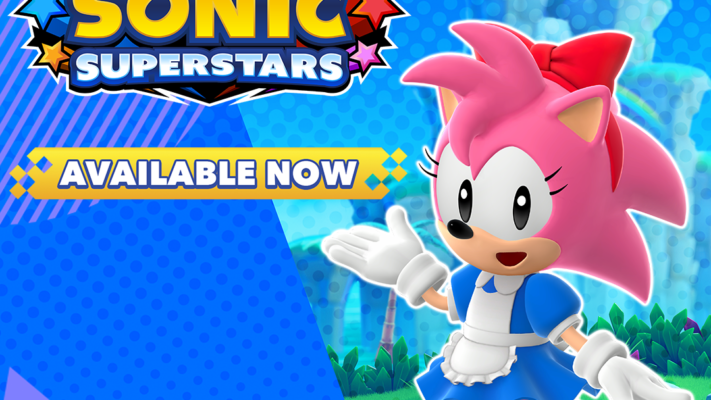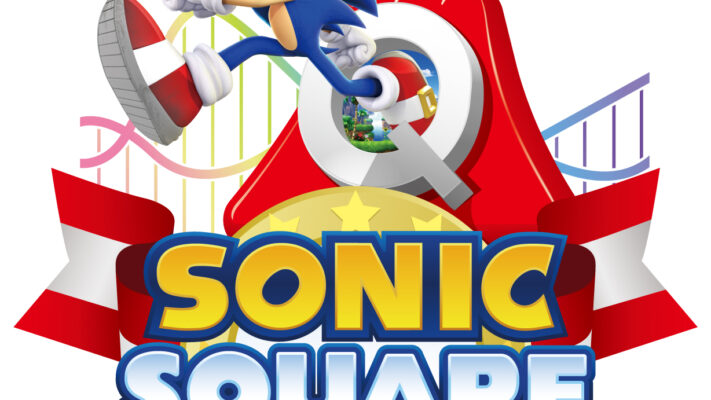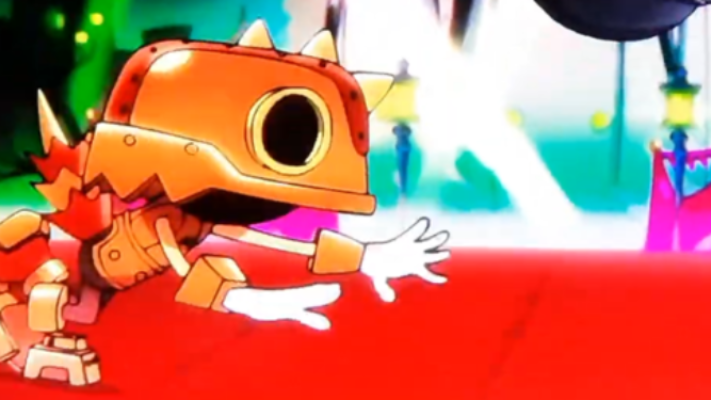In an interview with ntower.de, Takashi Iizuka and Naoto Ohshima discussed several interesting aspects of the upcoming Sonic Superstars.
One of the first points addressed in the interview was the purpose of the coins found throughout the game. These coins will not only function as in-game currency for the game’s customization shop but also serve as a means to replace Lives and Game Overs.
Naoto Ohshima: I really wanted to make a 2D classic game with no game over feature at all. Once we removed the game over features – like having no more continues and lives – we also had to remove the 1UP icon from the game that you also get when you collect 100 rings. Iizuka-san then brought up the problem that, when we remove this feature from the game, what do we put into the game to replace the 1UP rewards because they exist in so many places? My answer was to say yes, let us remove the 1UPs and replace the system with medals.
These medals are collectibles in the game, you can find them in bonus stages, for example. You will also get one when finding 100 rings. So in all zones and acts of the game, you can find these special medals. And then the next question was: What can you, as a player, do with the medals? And the real use of the medals is in the Battle Mode of the game. In this mode, you can build a metal fighter and customize it with special items. So instead of having the game over feature, we provide players with the possibility to customize their character in battle mode with the medals they can find throughout the game. So when they go online to experience the battle mode, they have a special reward for their achievement.
Ohshima also mentions that the new Metal character skins, including a new Metal Tails and a new Metal Amy that we haven’t seen yet, were designed by none other than the original designer behind Metal Sonic, Kazuyuki Hoshino.
One of the exciting features of the battle mode is that we have completely new metal versions of the main characters. The fighters in battle mode are customizable Eggman created characters, so we realized that we also need a Metal Tails and a Metal Amy. These new designs were created by Kazuyuki Hoshino from the Sonic Team who invented the character of Metal Sonic. So, definitely, if you get the chance, take a look at the new character design created by Hoshino-san.
Naoto Ohshima
Ohshima-san also talked about the fundamental differences in game design between Nintendo games and Sonic games, something he learned from his time working on Nintendo titles. He stated that with Nintendo, it’s about “leading the players through an experience” and guiding them through levels. In contrast, with Sonic, it’s that “there are multiple ways to reach your goal.”
ntower.de: Ohshima-san, for you, it is a return to Sonic after a lengthy time of working on other IPs. Your studio Arzest has, among other projects, worked on the Yoshi IP with Nintendo and has developed the Blinx games in partnership with Microsoft. So you have a lot of experience outside of the Sonic world that you can now bring in when thinking about a new platforming game. How did these projects influence your ideas on platforming games?
Naoto Ohshima: I have learned a lot working on different forms of action games and especially working with Nintendo. I am very grateful for working with the Nintendo team and learning their specific way of designing games and content. But there is a fundamental difference between Nintendo games and Sonic games. Nintendo is very focused on a tight form of game design. They put obstacles in their games and the goal for the player is to clear these obstacles in order to continue forward. The core idea of Nintendo’s design philosophy is to lead the players through an experience, show them how to clear the obstacles and then show them where to go next afterwards. They are really good at offering this form of focused experience and teaching you as a player how to beat a game.
When you play a Sonic game, however, there is no single path that you can teach someone to clear and have them follow the path to get through. The fundamental game design of the classic Sonic games is that there are multiple ways to reach your goal. If you make a mistake and fall down, there is still another way to get through the level. So in a Sonic game, people do not follow the same guided path that they would follow in a Nintendo game. You can, for example, brute force your way through the level if you are willing to lose rings on the way. That is very different from the way that Nintendo would want players to experience their content.
In Sonic Superstars, with the addition of the new Emerald Powers, players have even more choice to complete the game in the way they want and get around the original design of a level. So there are all these layers in Sonic Superstars that are different from the way Nintendo designs content. Though I have learned a lot, this experience does not really apply to the design philosophy of Sonic.
The topic of the game’s art style was also discussed, with Takashi Iizuka mentioning that 2D pixel art can limit the game’s audience. This is why they chose to use 3D assets for Superstars to appeal to a broader range of players.
ntower.de: Iizuka-san, when we talk about classic Sonic games, one game that is very beloved by many fans is Sonic Mania, a title that you created together with the team of Christian Whitehead. In a recent interview with Game Informer, you said that, although Sonic Mania is a great game, one of its limitations is that, with its pixel art style and gameplay, it is targeting a specific core audience. One goal of Sonic Superstars is to reach a new audience for classic Sonic games. How did you choose the art style for the game and were there obstacles in using this specific graphics style for a 2D platformer?
Takashi Iizuka: I really enjoyed Sonic Mania, that was a great game. But one of the limitations of the game was that, though the pixel art was really great and nostalgic, it was mainly great and attractive for players who were used to this style of game and who have a nostalgic view on pixel art. For people like us who grew up with pixel games, this was very common and it made perfect sense to experience a game in this way.
But when we think down the road of an audience that is maybe ten or twenty years old, it is not going to work for them in the same way and they will not have the nostalgia that we have. That is why we said that we need to use a new visual format that people will know and understand now, and that is the 3D graphics that is similar to the style of other current games. So young kids now are going to be familiar with this style and ten or twenty years down the road they will say that this looks still great and that it feels familiar. This is why we chose this art style and this specific design of the world.
Other interesting points that were discussed included the comparison between Sonic Generations and Superstar’s controls. Takashi Iizuka stated that the team aims to deliver games with the same classic gameplay feel as present in Sonic Superstars, rather than the Classic Sonic gameplay found in Sonic Generations.
ntower.de: We had the opportunity to play Sonic Superstars here at gamescom and playing the game and seeing the material, we felt reminded of Sonic Generations, another game that offers a distinctly modern take on classic Sonic gameplay. One element in Sonic Generations is the depth of the world – you can occasionally change perspectives and approach obstacles from a different angle. Was Sonic Generations an inspiration for you and the team and what did you change compared to this last attempt on a modernized 2D Sonic game?
Takashi Iizuka: For Sonic Generations the 3D world and 3D gameplay were created first. What we did in this game was to lock the camera so that we can show the players the sideview of this 3D adventure. So the game focuses on modern Sonic gameplay with a classic element on the sideview. When you look at the controls, you will see that it feels more like a modern Sonic game than having the feel of the classics.
The team really wanted to make sure that this classic Sonic gameplay remained intact and remained in Sonic Superstars so that people who love the classic feel can be assured that they will find that in this new entry. Moving forward, when we do more classic Sonic games, we want to keep this classic feel alive. That is the fundamental difference to the sideview in Sonic Generations.
One of the easiest ways to explain this is the following: When you play the classic courses in Sonic Generations, you are given a main route to follow. Maybe on the top and the bottom of the screen, there will be a few additional paths, but you mainly continue on the main route until the end of the level. That is a representation of the modern Sonic gameplay style. When you play Sonic Superstars or another of the classic games, there is not really a main route to follow. You will have all these branches and paths opening up and you will find numerous ways to complete a level. These massive maps are really a core element of the classic games and they do not exist in the same way in the modern Sonic formula.
At the end of the interview, Ohshima-san and Iizuka-san discussed why there has been renewed interest in 2D games in recent years. Ohshima expressed that 2D games simply offer better control than 3D games, while Iizuka noted that 2D and 3D games provide completely different experiences and gameplay.
Naoto Ohshima: I think this revival of 2D games is largely owed to the tightness of the design. When you press a button in a 2D game, you have complete control of what is going on on the screen. You have a very good control of the timing and the actions in a game. It is easy to understand the controls and feel the controls when playing this kind of game. That makes it compelling and fun to play.
When you make a game in 3D, you do not have this form of clean controls. You need tools like lock on assist to ensure that you are not off when performing an action. To make the game feel like it is intended to be, a lot of time and effort has to be put in to provide this form of assistance. I think that a lot of companies are recognizing this now and want to offer content that is appealing for fans of 2D games.
Takashi Iizuka: I fully agree with Ohshima-san here. The classic Sonic games were picked up and enjoyed by many people back in the day. When we made the move to the 3D format with Sonic Adventure, a lot of people also liked this new style. But I started realizing that this new format is not an evolution of the 2D gameplay. It is really a totally different genre. The fun that you have when you play a 3D game is completely different from the fun that you have when you play a 2D game. We are lucky that we have both kinds of formats for Sonic. It exists as an amazing 2D game and an amazing 3D game. Moving forward, we want to think about the pillars of content that we can create and we want to provide players with both styles of gameplay by doing so. We want them to have fun when playing both 2D and 3D games.
A lot of interesting details were revealed in this interview! Do you agree with some of the points that were discussed, such as the game’s art style? Share your thoughts in the comments below, and stay tuned to Sonic City for more Sonic Superstars news and updates!
Source: ntower.de
Discover more from Sonic City ⋆★ Sonic the Hedgehog News, Media, & Community ★⋆
Subscribe to get the latest posts sent to your email.







